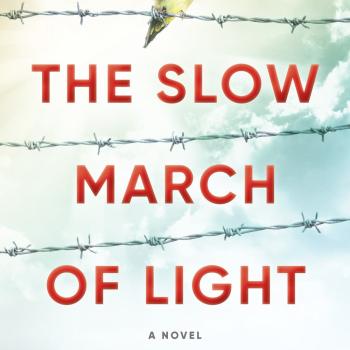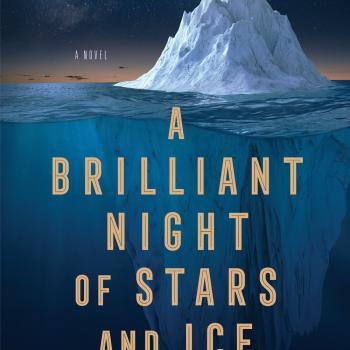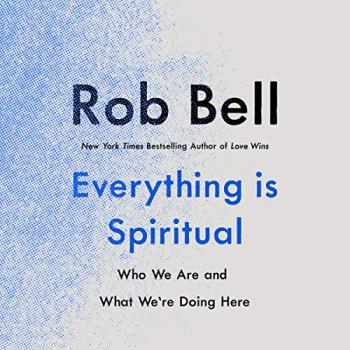[This post is part of a conversation on the new book Wisdom & Wonder: Common Grace in Science & Art, by Abraham Kuyper, at the Patheos Book Club here.]
 During a recent power outage, a woman picked up her phone to hear the frantic voice of her fifty-five year old daughter. “The power’s off! The microwave and stove are dead. What are we going to do to eat?” Mom took a deep, slow breath and replied, “Honey, you have a fireplace. Build a fire and use a cookie sheet.” Sniffling, the daughter hung up only to call back a little later. “Mom, this is great! We had bacon and eggs! Thank you, Mom!” A few thousand years after the rest of us, a fifty-five year old woman just discovered fire.
During a recent power outage, a woman picked up her phone to hear the frantic voice of her fifty-five year old daughter. “The power’s off! The microwave and stove are dead. What are we going to do to eat?” Mom took a deep, slow breath and replied, “Honey, you have a fireplace. Build a fire and use a cookie sheet.” Sniffling, the daughter hung up only to call back a little later. “Mom, this is great! We had bacon and eggs! Thank you, Mom!” A few thousand years after the rest of us, a fifty-five year old woman just discovered fire.
Spirituality, as we pursue it today, supports a vast economy of personalities and product. A new face or “ism” mushrooms into the spotlight every week propelled by social media. And then, every once in awhile, someone rediscovers fire. Pursuing God is dangerous business because, in pursuing Him, we find that He pursues us and not just to massage the muscles of our self-centeredness. Serious pursuers of the spiritual life know that the old wells yield the sweetest water. John of the Cross, Thomas a’ Kempis, A.W. Tozer and others aren’t currently trending on the Internet. And even if we know their names, we often bend their words to say what we want them to mean. The “Dark Night of the Soul” was actually a good thing, a compliment and honor from God. When life deflates and the gurus go flat and powerless, it’s time to rediscover fire. It’s time to rediscover someone like Abraham Kuyper.
Kuyper lived in Holland during the bridge years between the nineteenth and twentieth centuries. Both a scholar and a pastor in the Dutch Reformed Church, Kuyper also became involved in politics, beginning in parliament and eventually serving as the prime minister of the Dutch cabinet. Don’t misread this as an early twentieth century equivalent of either Pat Robertson or Mike Huckabee. Kuyper did not serve to impose his faith agenda on a national populace but to see healing grace (common grace) infuse every level of a broken Dutch culture and society. He famously said, “Oh, no single piece of our mental world is to be hermetically sealed off from the rest, and there is not a square inch in the whole domain of our human existence over which Christ, who is Sovereign over all, does not cry: “Mine!” Richard Mouw (link to Abraham Kuyper: A Short and Personal Introduction) penned a good introduction to him for those interested. This book will be a “find” for Kuyper freaks (and there are many in the Christian fold) as it’s the first installment of a major translation project eventually bring a three volume set into English for the first time. These chapters were originally omitted from the Dutch work and appear for the first time.
In Wisdom and Wonder, Abraham engages two segments of culture that stand as prominently now as they did then and more so – science and art. And the word “engage” is important. Abraham Kuyper never went around, over or under anything in his life. He went through. “If God’s hand is at work in this world,” he said, “then in this world the believer’s hand must take hold of the plow, and the name of the Lord must be glorified in that activity as well.” He would not define “science” as narrowly as we might today but would include the humanities and social sciences as well. Greatly respecting the physical sciences, Kuyper also saw other disciplines such as history, philosophy, literature, psychology and art as being expressers of truth on an intellectual peer level. Under “science”, Kuyper heads chapters on wisdom, knowledge, understanding, sin and education. Under art, he highlights chapters on wonder, beauty, glory, creativity and worship. In today’s culture, who gets to speak about truth (The sciences alone where everything must be empirically verifiable? Can there be truth with a capital “T”?)? What about art? What makes it good, bad (or profane)? Is it just good if I like it (Think paintings of Elvis on black velvet!)? Or can art talk to us about who we are, where we’re going as a culture and Who God is? What does beauty mean and is it trying to tell us something?
We owe Abraham Kuyper credit for the modern resurrection of the concept of the worldview. Basically, everyone operates with an underlying set of presuppositions and values that steer how we live. Cultures and societies do also. The interesting twist lies in that the beliefs we intellectually hold do not always reflect the ideas that really drive our lives. Religious beliefs aside, this is a human thing. A significant cause of human and cultural fragmentation we see today comes from the disconnect between how we think and how we live. Reversing this unraveling of soul is the stuff of which spiritual quest is made. Abraham Kuyper pays us the compliment of assuming we have working minds both alive in the image of God and active under His Spirit. Reading him simply doesn’t have much in store for the person for whom “How do I feel about myself today?” seems a major issue. He demands we approach his work with thought; chew slowly and thoroughly. Ask big questions. It’s the only way to get big answers.
 David Swartz pastors Bethel Baptist Church in Roseville, Michigan. He thinks that jazz is sacred music, that books are better company than most people, and that university towns rock. He blogs at geezeronthequad.com.
David Swartz pastors Bethel Baptist Church in Roseville, Michigan. He thinks that jazz is sacred music, that books are better company than most people, and that university towns rock. He blogs at geezeronthequad.com.











